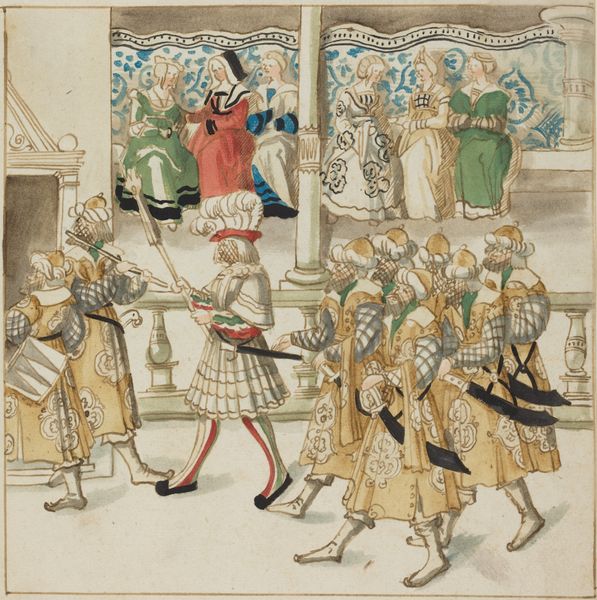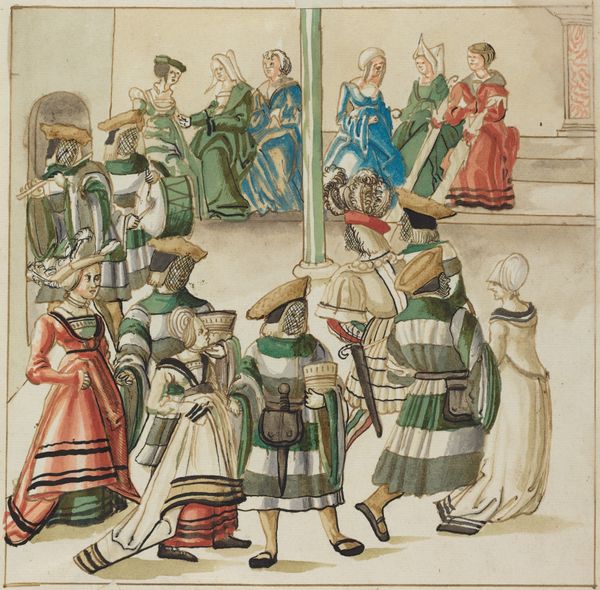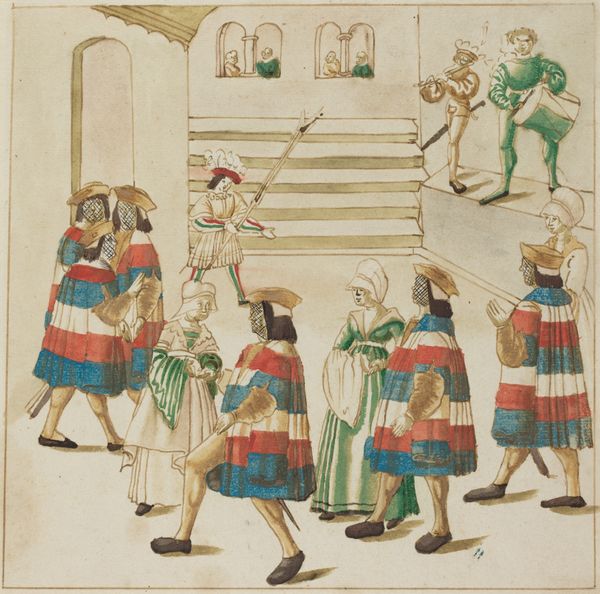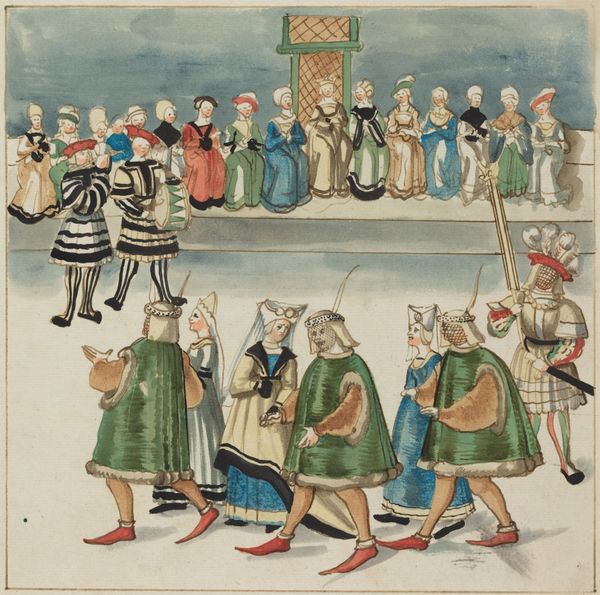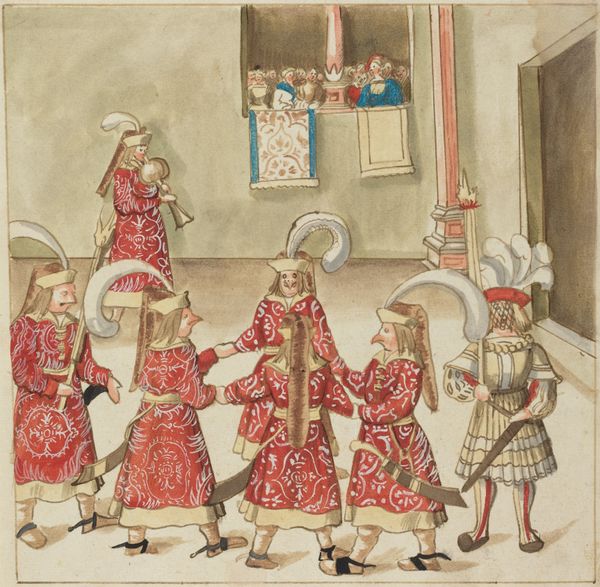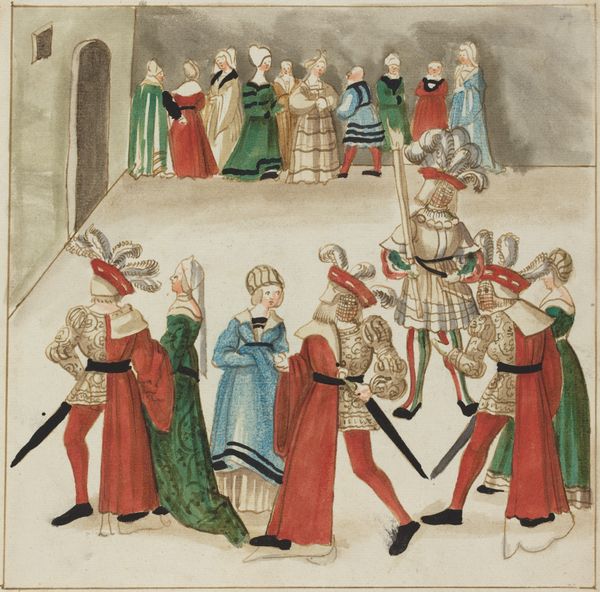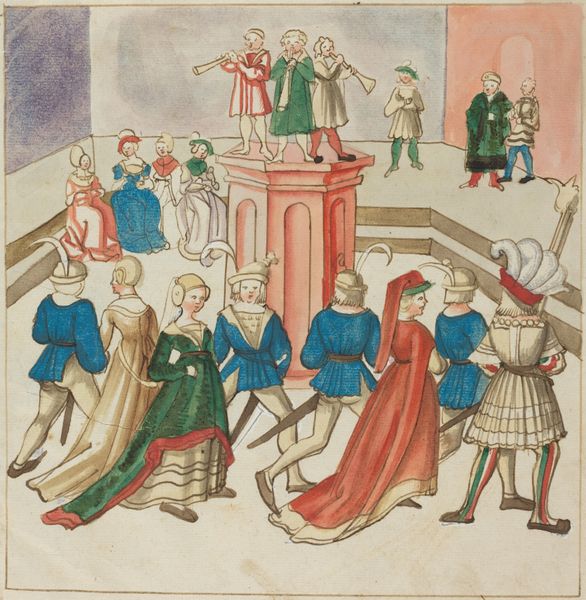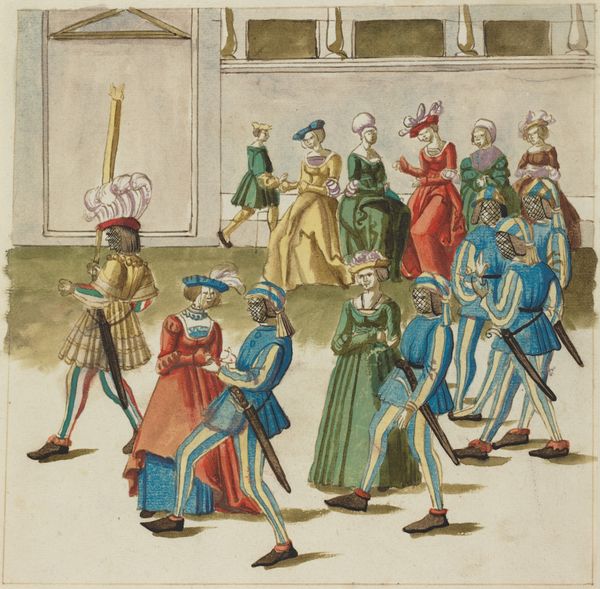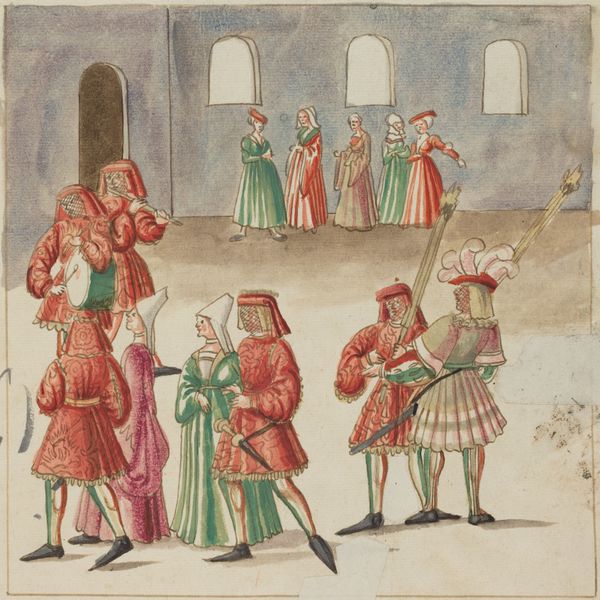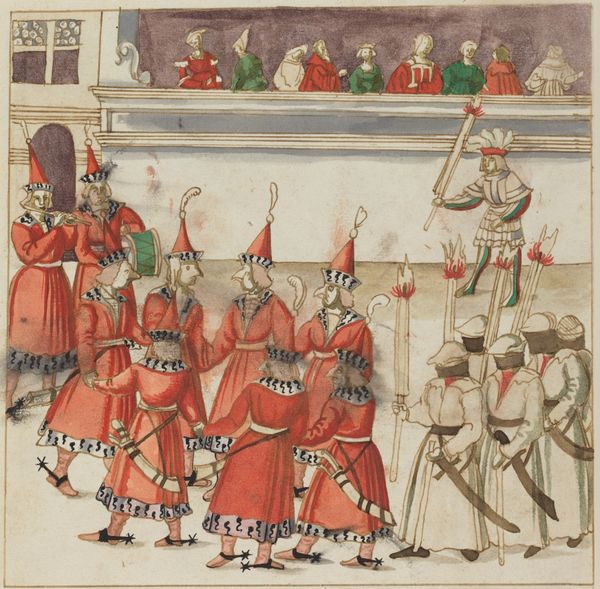
drawing, coloured-pencil, watercolor
#
drawing
#
coloured-pencil
#
11_renaissance
#
watercolor
#
coloured pencil
#
watercolour illustration
#
genre-painting
#
italian-renaissance
Dimensions: image: 23.3 cm (9 3/16 in.) sheet: 33.7 x 26.9 cm (13 1/4 x 10 9/16 in.)
Copyright: National Gallery of Art: CC0 1.0
Editor: This drawing, “Masquerade,” dating from around 1512 to 1515, is rendered with watercolor and colored pencil. It captures a scene of what appears to be a Renaissance-era celebration. The figures' elaborate costumes and the overall atmosphere evoke a sense of performative identity. What do you make of the masking in relation to class and societal expectations in the painting? Curator: The masking here, the masquerade, is so interesting, especially thinking about societal structures of the time. Notice how the costumes, while obscuring identity, paradoxically reinforce class distinctions. Consider also, who had access to participate in such events? The act of veiling can also highlight and subvert power dynamics, both expressing and perhaps testing gender, class or social constraints through performance. How might viewing this drawing through a contemporary lens inform our understanding of similar performative spaces today? Editor: So, you’re saying that although they are technically “anonymous” through the masks, they're still very much confined to their roles? That it's less about being free and more about performing freedom? Curator: Precisely! And consider the implications – does this “performance” challenge or solidify these established hierarchies? Could it be a space where social boundaries were not just reflected, but potentially, however momentarily, renegotiated? I'd argue that the ambiguity of masquerade lies exactly within these tensions, a push-and-pull between reinforcing and challenging social norms. What’s your impression? Editor: It definitely adds layers to the drawing that I didn't initially appreciate. I see now how the clothing in "Masquerade" and other paintings isn’t merely decorative, but reveals important insight on class dynamics and gender performances from that time. It’s a complicated perspective. Curator: Agreed. And it illustrates how art can serve as both a mirror and a prism, reflecting societal structures and refracting them in unexpected ways.
Comments
No comments
Be the first to comment and join the conversation on the ultimate creative platform.
